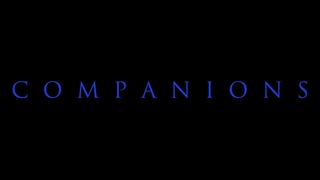YES - Relayer (1974) FULL ALBUM
YES - Relayer (1974) [ FULL ALBUM ]
1 - The Gates of Delirium (21’55)
2 - Sound Chaser (9’25)
3 - To Be Over (9’08)
- Jon Anderson – lead vocals, acoustic guitars, piccolo, percussion
- Steve Howe – acoustic and electric guitars, pedal steel, electric sitar, backing vocals
- Chris Squire – bass guitar, backing vocals
- Patrick Moraz – piano, electric piano, Hammond organ, Minimoog, Mellotron
- Alan White – drums, percussion
“The Gates of Delirium“ is a 21-minute track that Anderson described as “a war song, a battle scene, but it’s not to explain war or denounce it ... There’s a prelude, a charge, a victory tune, and peace at the end, with hope for the future.“
He originally planned to base the entire album on the literary work War and Peace by Leo Tolstoy, but instead opted for a side-long track inspired by its themes.
Moraz recalled a discussion about the story with Anderson as they had both read it, after which Moraz presented him with a copy of Délirius, a French science fiction graphic novel by Philippe Druillet. Moraz said: “He related to it immediately so I think that perhaps as a title ’The Gates of Delirium’ came from that“.
The song originated from several short themes that Anderson had amassed in his head and played them to the group on a piano “very badly“; he was relieved when his bandmates understood what he was trying to do.
Anderson and Howe kept track of its structure by recording sections of it on cassette tapes, leaving Anderson to figure out the next part as the group would develop what was put down prior.
The song was recorded in sections at a time, though the group was familiar with the entire piece beforehand and spent several weeks recording takes of each section and selecting the ones the members felt were the strongest. Once picked, the sections were edited together and overdubs were then recorded.
The battle section includes crashing sound effects that were created by White pushing over a tower of used car parts that he and Anderson had collected from a scrap yard.
Howe remembered Anderson becoming too excited in what he envisaged the battle to be, leading the group to produce one mix that was “too far gone“ and another “too safe“.
Following the battle, the track concludes with a gentle song that later became known as “Soon“.
Anderson later thought that “The Gates of Delirium“ did not come across effectively on record, but fared better in concert.
“Sound Chaser“ contains elements of jazz fusion and funk arrangements. Moraz was asked to devise an introduction to the song during his audition with the band; his contribution was finalised after “one or two takes“ and used on the final version.
He considered his Moog synthesizer solo at the end a highlight moment in his performance on the album, but felt that the keyboards overall were buried in the final mix.
Howe thought the track was “an indescribable mixture of Patrick’s jazzy keyboards and my weird sort of flamenco electric [guitar]“, yet he disliked Moraz’s initial choice of chords he played during his guitar solo, causing Moraz to play it differently, which he disagreed with.
Yes biographer Dan Hedges compared the track to the style of fusion group Return to Forever.
“To Be Over“ originated when Anderson spent an afternoon at Howe’s house in London. As the two discussed what music to prepare for the album, Anderson told Howe of his fondness for a melody Howe had written and had sung to Anderson before. Anderson also had the initial lyric: “We’ll go sailing down the stream tomorrow, floating down the universal stream, to be over“. Howe gained inspiration for the track from a boat ride on The Serpentine lake in Hyde Park in London. From the beginning, he thought the song was “really special“ and Anderson agreed to develop it further.
Howe had come up with the music for this particular section in the late 1960s and took a riff from a track by his earlier group, Tomorrow.
Anderson described “To Be Over“ as “Strong in content, but mellow in overall attitude ... It’s about how you should look after yourself when things go wrong.“
When the song’s lyric was being finalised, Howe suggested having the line “She won’t know what it means to me“ follow “We go sailing down the calming streams“, but Anderson changed it to “To be over, we will see“, a change that Howe thought was “creatively disguised“ to make a broader lyrical statement.
Moraz felt constricted to perform an improvised keyboard solo for the song, so he wrote down a counterpoint solo “exactly like a classical fugue“ to blend his keyboards with the guitar and bass.
He had written an initial version on paper in an evening, yet the band expressed their wish to change the key of the song for the section, causing Moraz to spend several hours rewriting it overnight.























